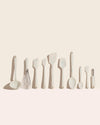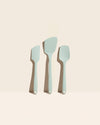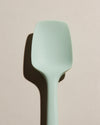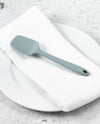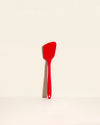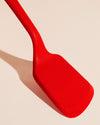Products
When Were Straws Invented? The History of Straws
Published
April 16, 2024
Reviewed by
Suze Dowling

Straws, seemingly simple yet ubiquitous, have played a large role in how we consume beverages.
Understanding the origins of this humble tool is a fascinating journey into history. From ancient civilizations to modern-day cafes, the evolution of straws offers insights into human ingenuity and societal practices. Let’s discuss it!
What Is the Origin of Straws?
The earliest semblances of straws date back to ancient civilizations. Mesopotamians used long metal tubes to drink beer, showcasing an early form of this utensil. Similarly, Ancient Egyptians crafted straws from organic materials like reeds, allowing them to sip liquids without disturbing sediments in their vessels.
These primitive yet ingenious adaptations marked the start of straws in human culture, laying the foundation for future innovations in beverage consumption practices.
What Is the Evolution of Straws in Different Cultures?
The evolution of straws transcended geographical boundaries, with diverse cultures shaping their own versions of this indispensable tool in interesting ways:
Chinese Civilization
In ancient China, bamboo straws were a revered element in tea culture. Delicately crafted and revered for their natural charm, bamboo straws symbolized connectedness with nature and sustainable practices.
The practice of using bamboo straws enhanced the tea-drinking experience and underscored the profound connection between humanity and the environment.
European Aristocracy
In contrast, the opulent courts of Europe during the Middle Ages enjoyed a different approach to straw usage. Aristocrats sipped their beverages through gold or silver straws, a lavish display of wealth and refinement. These precious metal straws went beyond utility, elevating the act of drinking into a conspicuous symbol of luxury and societal status.
Beyond these examples, various cultures worldwide displayed ingenuity in crafting and utilizing straws tailored to their traditions and rituals. From ornate vessels for ceremonial libations to practical tools for everyday hydration, the evolution of straws in different cultures reflects innovation, symbolism, and cultural significance.
How Did Straws Continue to Evolve?
Beyond the straw’s inception, evolution continued throughout the centuries, with historical periods marking their changes:
The Industrial Revolution
The Industrial Revolution marked a transformative era for straw production. Innovations in materials and manufacturing processes revolutionized the accessibility of straws, transitioning them from handcrafted novelties to mass-produced essentials.
Paper and plastic became the preferred materials, enabling the proliferation of straws in dining establishments worldwide. The era heralded a shift toward convenience and efficiency, solidifying straws as a staple in modern beverage consumption practices.
20th-Century Innovations and Environmental Concerns
As the 20th century dawned, innovations in straw design proliferated. Flex straws, bendy straws, and spoon straws emerged, catering to diverse preferences and elevating the drinking experience.
However, alongside these advancements came escalating environmental concerns. The rise of single-use plastic straws cast a shadow on their convenience, prompting a reevaluation of their environmental impact.
What Was the Shift Toward Sustainable Alternatives?
A paradigm shift unfolded toward sustainable straw alternatives in response to mounting ecological worries. Reusable stainless steel, glass, silicone, and bamboo straws gained traction, championing eco-conscious choices in beverage consumption.
- Stainless Steel Straws: Durable and long-lasting, stainless steel straws offer a sleek and modern appeal. Resistant to corrosion and easy to clean, they are perfect for both hot and cold beverages. Their reusable nature makes them ideal for eco-conscious consumers looking for a sturdy and stylish alternative.
- Glass Straws: Elegant and crystal-clear, glass straws provide a visually appealing and hygienic option for sipping beverages. Heat-resistant and non-toxic, they allow users to enjoy their drinks without compromising on taste. The transparency of glass straws adds a touch of sophistication to any drink.
- Silicone Straws: Flexible and soft to the touch, silicone straws offer a safe and versatile choice for all ages. Their bendable nature makes them ideal for travel and on-the-go use. BPA-free and easy to clean, silicone straws come in vibrant colors and are gentle on teeth, ensuring a comfortable drinking experience.
- Bamboo Straws: Rustic and sustainable, bamboo straws exude natural charm and eco-friendliness. Biodegradable and compostable, they provide a renewable alternative to plastic straws. Each bamboo straw is unique in texture and appearance, adding a touch of earthy elegance to your beverage routine.
Regulations and Bans on Plastic Straws
Amid heightened environmental awareness, global movements advocating for the regulation or outright ban on single-use plastic straws gained momentum.
Countries, states, and cities implemented policies to reduce plastic waste, prioritizing the preservation of marine ecosystems and wildlife. These initiatives underscored the urgent need to combat plastic pollution, prompting consumers and businesses to reconsider their reliance on disposable plastic straws.
Why The Enduring Love for Straws?
Regardless of the evolution of straws, they remain a kitchen staple. Here are a few reasons why people have developed such a fondness for straws:
- Ease of Use: Straws simplify the drinking experience, whether sipping on a refreshing beverage or enjoying a decadent milkshake. They offer a seamless way to savor drinks without the need for tilting cups or mugs.
- Hygiene: Straws provide a hygienic solution for consuming beverages, particularly in public settings or communal gatherings. They reduce direct contact with glasses, adding a layer of cleanliness to the drinking process.
- Customization: From colorful bendy straws to elegant glass variants, straws allow for personalization and self-expression, especially when paired with your favorite drinkware! They come in many shapes, sizes, and materials, catering to diverse preferences and styles.
- Fun Factor: Let's admit it — there's something inherently fun about using a straw. Whether creating new concoctions or reliving childhood memories, straws infuse a sense of playfulness into drinking.
- Environmental Concerns: While plastic straws have faced criticism due to environmental impact, the shift towards eco-friendly alternatives has reignited interest and appreciation for straws. Reusable and sustainable options offer consumers a guilt-free way to enjoy their favorite beverages while minimizing ecological harm.
The enduring love for straws stems from a combination of practicality, nostalgia, and evolving consumer values, making them a beloved and versatile accessory.
The Takeaway
As we wrap up our exploration of the history of straws, it's pretty wild to think about how something as simple as a tube for sipping drinks has such a rich backstory. From ancient times to today's eco-friendly innovations, straws have been on quite the journey.
Beyond just being tools for sipping, they're time capsules of culture, tech, and even environmental awareness. Let's take a moment to think about how our choices impact the world around us. As we move ahead, let's keep the lessons from the past in mind and opt for sustainable options that keep our planet in mind.
If you love straws and the fun and convenience they lend to everyday beverages but also want to do your part for sustainability, check out GIR’s Earth-friendly straws.
Sources:
Who Invented the Straw? Unveiling Its Impactful Evolution | History Cooperative
